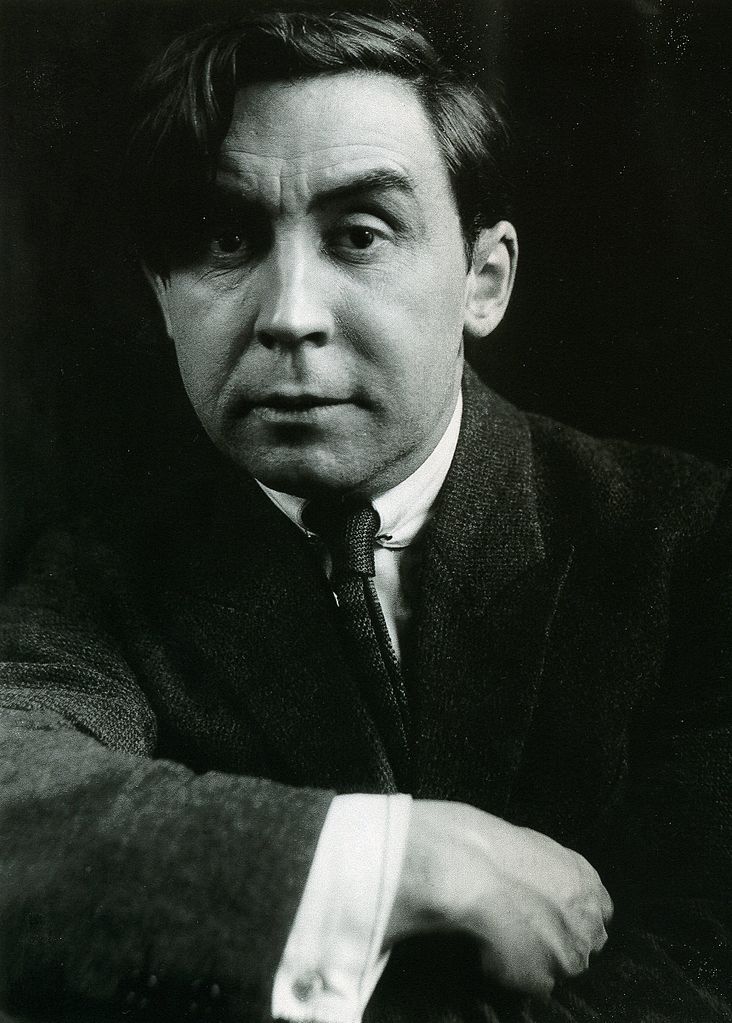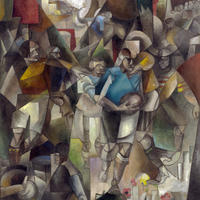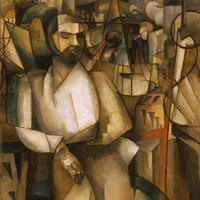More about Albert Gleizes
Works by Albert Gleizes

Contributor
Albert Gleizes is primarily famous for his contributions to cubism, which was one of the first art movements of the modern era that qualified as subversive.
Cubists argued that art did not need to imitate nature the way that most art had for the past five hundred years, a perspective validated by Pablo Picasso and Georges Braque. While Albert wasn’t an original creator of the school, he was one of the people that helped it go from a simple appreciation of impressionistic geometry to a full fledged movement.
An important aspect to understand about Albert Gleizes is that while he is a great artist, he was also a bit of a generalist, and did a lot of different things in his life. His first love, for example, was for the theater. Of course, as happens to many an actor, his father didn’t really understand his son’s love of the stage, and made him work in his fabric studio part time. From there Albert joined the military, during which time he changed his mediums of choice from theater and fabric to painting and socialism. Once out of the army, Albert tried to get some of his friends together to form a little bohemian utopia called the Abbaye de Créteil that scorned the rich and sought to support itself by producing modern art. The Abbaye existed for two years before closing due to financial distress.
It was after this failure that Albert really found his footing. He started experimenting with cubism, and in 1912 he and another cubist by the name of Jean Metzinger wrote Du Cubisme which, ironically for the visual artist, would become the man's greatest contribution to the art world. To be fair, the book has some rather interesting and extreme statements in it. For example, at one point he says that “the Cubist” relies on non-Euclidean mathematics. In a gross summary of advanced math, that means he believed that their work relied on a theories of geometry that stated that straight lines didn’t exist. A bold statement for a man whose art has quite a few edges in it, let alone corners.
After Du Cubisme (and another tour with the army) Albert’s career really took off, and he began receiving commissions for bigger and better projects including a few murals for the Paris World's Fair of 1937. While most of his reputation lay in his pre-war work, Albert would continue working after the war trying to create a synthesis between medieval christian aesthetics and modern art. He would work until his death in 1953.
Sources
- Gleizes, Albert Metzinger,Jean “Du Cubisme” Eugène Figuière Éditeurs 1912
- Naiadseye “THE USE OF NON-EUCLIDEAN GEOMETRY IN ART” naiadseye.wordpress.com 13/11/2014 https://naiadseye.wordpress.com/2014/11/13/the-use-of-non-euclidean-geo…
- Sabine Rewald, “Heilbrunn Timeline of Art History: Cubism” The Met 2000 https://www.metmuseum.org/toah/hd/cube/hd_cube.htm
- Web contributor “Albert Gleizes” Guggenheim viewed on 09/08/2019 https://www.guggenheim.org/artwork/artist/albert-gleizes
- Web contributor "Albert Gleizes." Oxford Reference. ; Accessed 8 Sep. 2019. https://www.oxfordreference.com/view/10.1093/oi/authority.2011081010500…
Featured Content
Here is what Wikipedia says about Albert Gleizes
Albert Gleizes (
French: [albɛʁ ɡlɛz]; 8 December 1881 – 23 June 1953) was a French artist, theoretician, philosopher, a self-proclaimed founder of Cubism and an influence on the School of Paris. Albert Gleizes and Jean Metzinger wrote the first major treatise on Cubism, Du "Cubisme", 1912. Gleizes was a founding member of the Section d'Or group of artists. He was also a member of Der Sturm, and his many theoretical writings were originally most appreciated in Germany, where especially at the Bauhaus his ideas were given thoughtful consideration. Gleizes spent four crucial years in New York, and played an important role in making America aware of modern art. He was a member of the Society of Independent Artists, founder of the Ernest-Renan Association, and both a founder and participant in the Abbaye de Créteil. Gleizes exhibited regularly at Léonce Rosenberg's Galerie de l’Effort Moderne in Paris; he was also a founder, organizer and director of Abstraction-Création. From the mid-1920s to the late 1930s much of his energy went into writing, e.g., La Peinture et ses lois (Paris, 1923), Vers une conscience plastique: La Forme et l’histoire (Paris, 1932) and Homocentrisme (Sablons, 1937).
Check out the full Wikipedia article about Albert Gleizes












